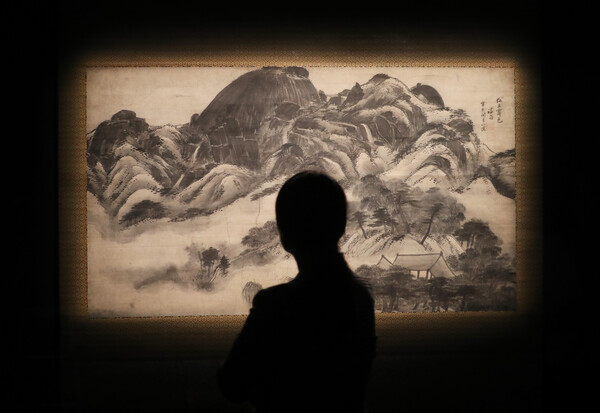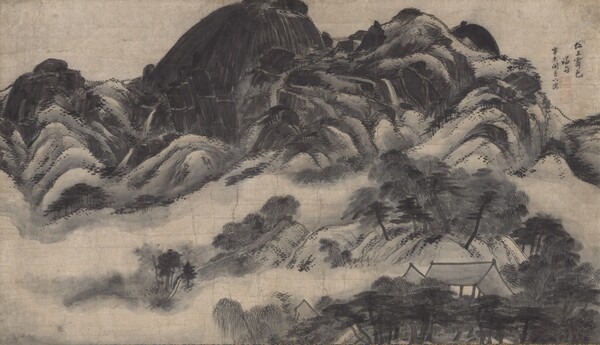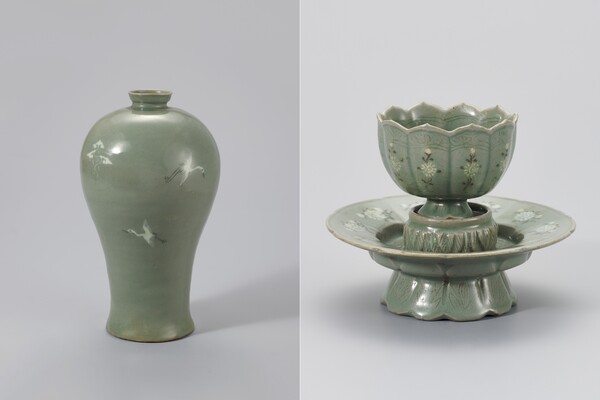After a brief delay, 330 masterpieces—from national treasures to modern icons—unveil Korea’s cultural depth to the world

A sweeping survey of Korean art history has unfolded in the heart of Washington, D.C., as the highly anticipated Lee Kun-hee Collection makes its international debut. After a week-long postponement caused by the U.S. federal government shutdown, the exhibition finally opened on December 15 at the National Museum of Asian Art, presenting an unprecedented gathering of Korea’s cultural heritage.
Titled “Treasures from Korea: Collecting, Preserving, Sharing,” the exhibition marks the first overseas showcase of the collection donated to the Korean state by the late Samsung Chairman Lee Kun-hee and his family. The display comprises 330 works, including seven National Treasures, 15 Treasures, and an expansive selection of Korean modern and contemporary art.

The exhibition spans over a millennium—from the refined minimalism of Joseon white porcelain and the luminous celadons of Goryeo to avant-garde works by Kim Whanki, Park Soo-geun, and Lee Ungno. Among the most anticipated pieces is the 18th-century masterpiece “Inwangjesaekdo” (Clearing After Rain at Mt. Inwang) by Jeong Seon, widely considered one of the peaks of Korean landscape painting.
Yoo Hong-jun, Director of the National Museum of Korea, emphasized the significance of the event: “This exhibition offers a rare opportunity for global audiences to engage with the spirit, beauty, and timeless creativity that define Korean culture.”

Originally scheduled to open on December 8, the exhibition was delayed due to the temporary closure of Smithsonian museums. The week-long wait, however, has only heightened anticipation among U.S. visitors and scholars of Asian art.
The exhibition opens with a section dedicated to chaekkado, traditional Korean paintings depicting bookshelves adorned with porcelain, stationery, and scholarly objects. The arrangement offers visitors an intimate look into Korea’s historical appreciation for knowledge, philosophy, and material culture.

Other highlights include meticulously crafted gold-ink Buddhist scripture scrolls, the deep jade tones of Goryeo celadon, serene Joseon white porcelain, and the vibrant colors of modern Korean abstraction. A reproduction of the iconic “Irworobongdo”—a five-peak landscape featured in the Netflix animation K-Pop Demon Hunters—also appears, bridging tradition with contemporary pop culture.
The collection further illuminates key developments in 20th-century Korean art, from Kim Whanki’s lyrical abstraction “Mountain Echoes” to Park Soo-geun’s textured depiction of everyday life. These works reveal the evolution of Korean aesthetics from post-war realism to modern experimentation.

Kim Sung-hee, Director of the National Museum of Modern and Contemporary Art, noted: “Korean art continues to evolve by embracing both historical depth and cultural diversity. This exhibition introduces that dynamic narrative to a global audience.”

Following its run in Washington through February 1, 2026, the exhibition will travel to the Art Institute of Chicago (March 7–July 5, 2026) and later to the British Museum in London (September 10, 2026–January 10, 2027). Each venue is expected to present a tailored version of the exhibition to reflect local curatorial perspectives.

With domestic audiences already showing immense enthusiasm—over 1.16 million visitors viewed the related exhibitions in Korea—the international reception is expected to be equally strong.
Director Yoo added: “We hope this exhibition becomes a milestone in sharing Korea’s artistic creativity with the world, reinforcing the roots of what is now known as K-culture.”


